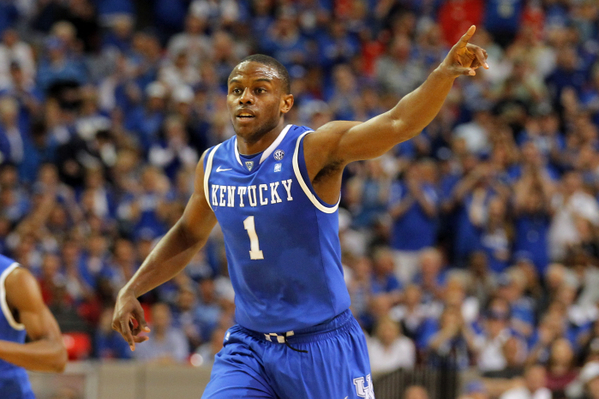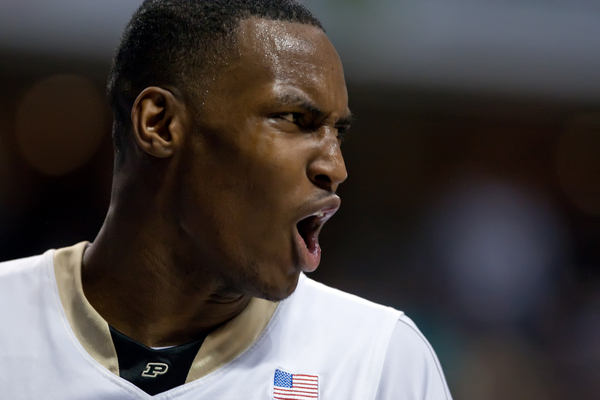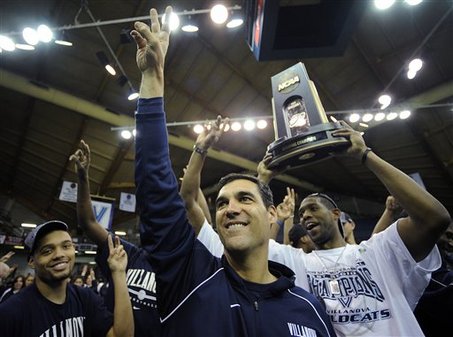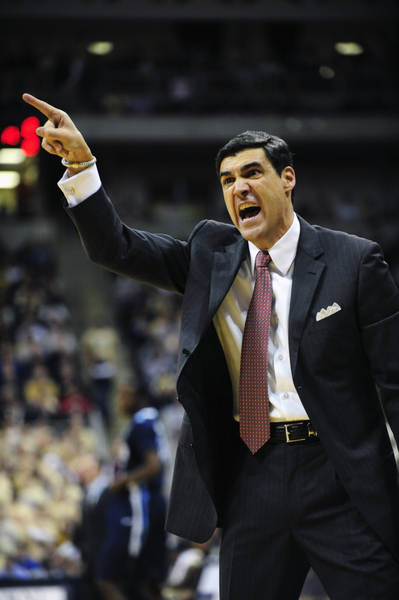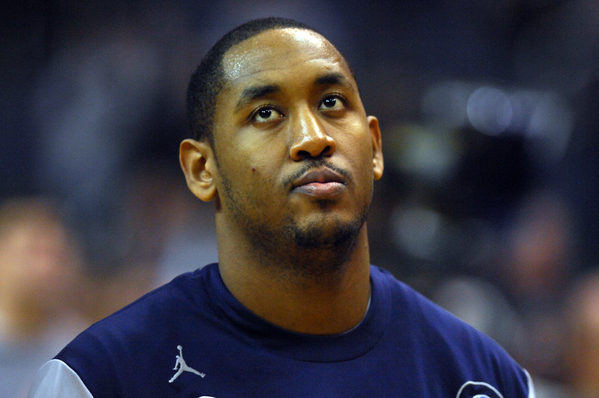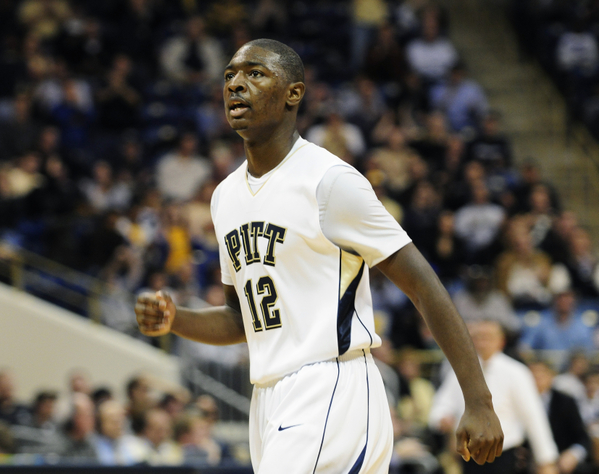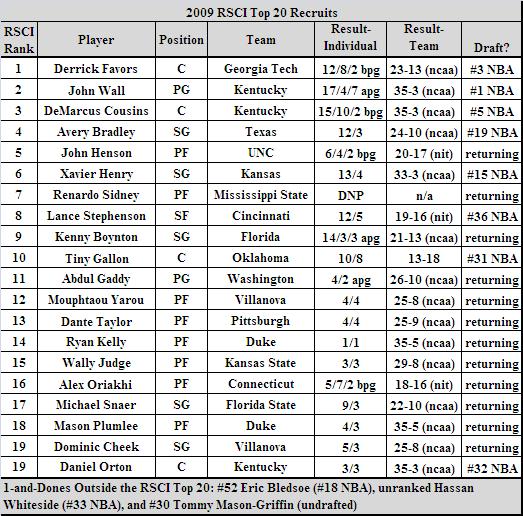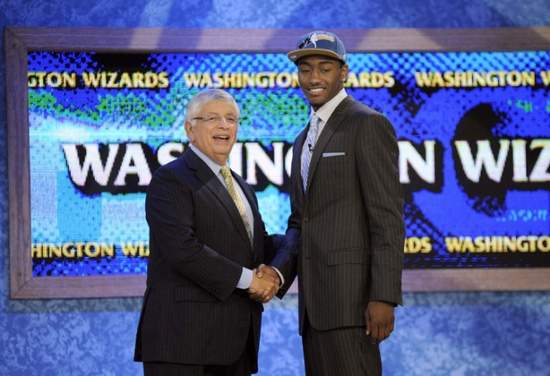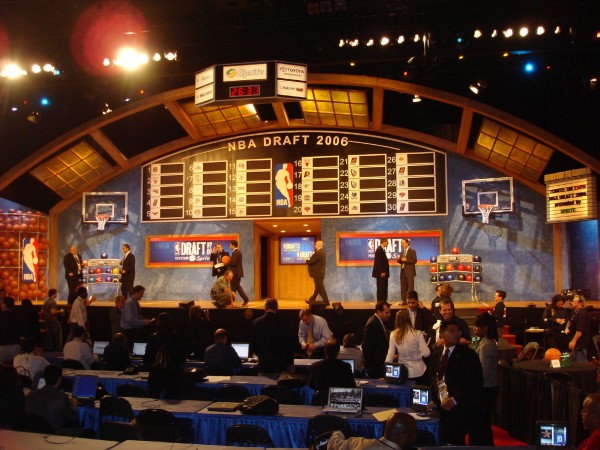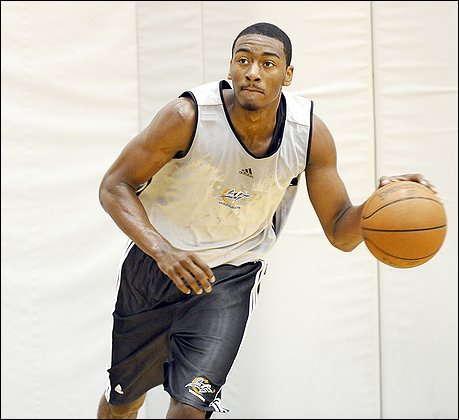
Rob Dauster of Ballin Is A Habit is the RTC correspondent for the Big East conference.
A Look Back
The Big East had been questioned coming into the season. I did it myself. They didn’t have their usual firepower up top. Their preseason player of the year candidates — the Austin Freemans and Corey Fishers and Kris Josephs of the world — barely make a peep on NBA Draft boards. And the bottom of the league? Don’t get me started on the bottom of the league.
But is it possible that, while looking at the Big East’s faults, we happened to overlook just how deep the conference is? Yes, apparently. The early season tournaments aren’t just an entertaining way to kick off a normally bland start to the college basketball season. They also act as a gauge, a way to measure how each respective conference stacks up against one another.
And the Big East was, in a word, impressive, in the 2010 installment of the early season tournaments:
- UConn beat Wichita State and upset Michigan State and Kentucky to win the Maui Invitational.
- Syracuse beat Michigan and Georgia Tech to win the Legends Classic.
- Notre Dame notched wins over Georgia, Cal, and Wisconsin to with the Old Spice Classic.
- St. John’s beat Arizona State in the finals of the Great Alaska Shootout.
- Pitt won the Coaches vs. Cancer Classic by beating Maryland and Texas in NYC.
- Georgetown won the Charleston Classic with a win over NC State in the finals.
- Villanova lost to Tennessee in the finals of the Preseason NIT.
- West Virginia beat Vanderbilt in the Puerto Rico Tip-Off before losing to Minnesota in the finals.
By my count, that is six tournament titles and two second places finishes. Both of the second place finishes came via loss to a top 25 team. With the exception of Louisville, who didn’t play in one of these tournaments, each of the Big East’s top eight teams finished either first or second in their respective tournament. The ESPN/USA Today poll currently has five Big East teams in the top 25, and eight in the top 29. The AP poll looks even better, as those eight teams are all in the top 27, with Notre Dame also sneaking their way into the top 25.
The top of the Big East is a far cry from where it was in 2009, when they sent five teams to the Sweet 16, three to the Elite 8, two to the Final Four, and logged three of the four No. 1 seeds in the NCAA Tournament. But with the depth of this conference — among the schools already listed, keep in mind Seton Hall is playing without Jeremy Hazell and with half of Herb Pope and Cincinnati just beat Dayton 68-34 — there is no reason we shouldn’t expect another season with eight or nine potential NCAA Tournament teams come March.
Player of the Week: Kemba Walker, UConn
It has to go to Walker, as much as I would like to pass the award elsewhere. Kemba absolutely took the college basketball world by storm out in Maui. Coming off of a 42-point performance against Vermont, the Huskies point guard put the team on his diminutive back and carried them to a Maui Invitational tournament title. He averaged 30.0 PPG, 4.0 APG, and 2.7 SPG during the event, leading his team to wins over then top ten teams Michigan State and Kentucky and into the top ten of both major polls.
Team of the Week: Notre Dame Fighting Irish
The Irish stormed through Disneyland, taking home the title in the Old Spice Classic held at Disney’s Wide World of Sports complex. Along the way, the Irish knocked off Georgia, Cal, and Wisconsin. There are a couple things that really impressed me about this team. For one, they are just as good defensively as they were last season. They held Wisconsin to 51 points two days after holding Cal to 44 points (and 5 in the first half!) The second thing that impressed me is the versatility they have in their lineup. The Irish can play big if they have too, using Tyrone Nash and/or Jack Cooley on the front line. But, as they did against Wisconsin, they can also go small, using essentially five perimeter players, with Carleton Scott, Scott Martin, and Tim Abromaitis on the front line. They also have a freshman point guard named Eric Atkins that proved his worth on this trip. He will allow Ben Hansbrough to play off the ball when need be. The third thing is their resiliency. The Irish were down 11 late in the second half to a good Wisconsin team before coming back and winning. Against Georgia, the Irish switched to a zone in the second half that helped then comeback from 12 down at the half.
Power Rankings: (last week’s ranking in parentheses)
1. Pitt 7-0 (1)
Last Week: 11/23 vs. Robert Morris 74-53, 11/27 vs. Penn 82-58
Next Week: 12/1 vs. Duquesne, 12/4 vs. Rider
Pitt looked like Pitt these two games. They smothered an overmatched opponent defensively, waiting for a big second half run to take control of the game. The Panthers are easily the best team in the Big East right now.
2. UConn 5-0 (9)
Last Week: 11/22 vs. Wichita State 83-79, 11/23 vs. Michigan State 70-67, 11/24 vs. Kentucky 84-67
Next Week: 11/30 vs. New Hampshire, 12/3 vs. UMBC
The only thing I want to elaborate on from above is that the Huskies role players have been pretty impressive. Shabazz Napier is a playmaking point guard that is a tough defender. Roscoe Smith and Jeremy Lamb are both impressive athletes with enough skills to be capable thus far. And Niels Giffey is the kind of all-around talent — defends, shoots the three, handles the ball — that UConn has been missing the last few seasons. The question is whether it lasts.
3. Villanova 5-1 (2)
Last Week: 11/24 vs. UCLA 82-70, 11/26 vs. Tennessee 68-78
Next Week: 12/4 vs. St. Joe’s
Villanova is desperately in need of a leader. Against Tennessee, the Wildcats just simply could not get into any kind of a rhythm offensively with their three back court stars struggling. Corey Stokes and Maalik Wayns combined for 6-20 shooting from the field and six turnovers. And Corey Fisher? He finished the game 1-10 from the floor with five turnovers and just three points. Worst still, he didn’t seem like he wanted any part of the ball down the stretch. That’s not a good sign for the kid that was supposed to fill Scottie Reynolds’ shoes.
4. Georgetown 6-0 (3)
Last Week: 11/27 vs. UNC-Asheville 87-72
Next Week: 11/30 vs. Missouri in Kansas City, 12/4 vs. Utah State
Last week, we talked about how the Hoyas’ big men were playing better than expected. Well, this week, we should now talk about how the back court may actually be outperforming expectations. Austin Freeman, Chris Wright, and Jason Clark are averaging a combined 47.2 PPG and 11.1 APG. Wright and Clark are both shooting over 45% from three. Freeman? He’s hitting an obscene 57.6% of his triples.
5. Syracuse 6-0 (4)
Last Week: 11/26 vs. Michigan 53-50, 11/27 vs. Georgia Tech 80-76
Next Week: 11/30 vs. Cornell, 12/4 vs. NC State
The most important part of two more unimpressive wins for the Orange was that Kris Joseph finally looked like the player many of us thought he was going to be all season long. Joseph had 22 of the Orange’s 53 points in the win over Michigan, then Joseph scored 16 of his 19 points in the second half — after fighting foul trouble in the first half — in the title game against Georgia Tech.
6. West Virginia 4-1 (5)
Last Week: 11/27 vs. VMI 82-66
Next Week: 12/1 vs. American, 12/4 @ Miami
The Mountaineers played just one game since their impressive second place finish in the Puerto Rico Tip-Off. In an 82-66 win over VMI. Casey Mitchell, once again, was the star, hitting for 25 points in the win. Kevin Jones hasn’t quite developed like many expected, but perhaps the bigger issue is that Truck Bryant was held out of the VMI game for “disciplinary reasons.”
7. Notre Dame 7-0 (8)
Last Week: 11/25 vs. Georgia 89-83 2OT, 11/26 vs. Cal 57-44, 11/28 vs. Wisconsin 58-51
Next Week: 11/30 vs. Indiana State
See above – Team of the Week
8. Louisville 4-0 (7)
Last Week: 11/27 vs. Marshall 80-66
Next Week: 12/1 vs. FIU, 12/4 vs. South Alabama
There’s not much more to say about Louisville than we already have said. They are 4-0 and have five guys averaging between 11.0 PPG and 12.0 PPG. Most surprising? Walk-on point guard Elisha Justice, averaging 7.0 PPG and 2.0 APG.
9. Marquette 5-2 (6)
Last Week: 11/22 vs. Duke 77-82, 11/23 vs. Gonzaga 63-66, 11/27 vs. Milwaukee 75-72
Next Week: 12/4 vs. Longwood
I’ve been high on Marquette all season long. They create quite a few matchup problems when they put their best lineup on the floor. But how impressive they were in a loss to Duke was erased in a close win over Milwaukee and a loss to Gonzaga. Marquette is always going to play close games, but until they start winning more impressively, the Golden Eagles have to slide.
10. St. John’s 4-1 (11)
Last Week: 11/25 vs. Ball State 88-83 OT, 11/26 vs. Drake 82-39, 11/28 vs. Arizona State 67-58
Next Week: 12/1 vs. Wagner
St. John’s looked like the St. John’s we expected this season. Playing four time zones to the west, the Johnnies rolled through the Great Alaska Shootout, capping their tournament victory with a come-from-behind win over Arizona State. St. John’s did it in the second half with a great press and on the back of 17.7 PPG from Justin Brownlee.
11. Cincinnati 5-0 (12)
Last Week: 11/24 vs. Savannah State 54-41, 11/27 vs. Dayton 68-34
Next Week: 12/1 vs. Wright State 12/4 @ Toledo
Cincinnati was flying far off of my radar, even with Sean Kilpatrick doing his best Lance Stephenson impression. But what the Bearcats did to Dayton? That just wasn’t right. The final doesn’t do that beatdown justice. The score at one point in the second half was 56-19.
12. Seton Hall 2-3 (10)
Last Week: 11/22 vs. Clemson 58-64 OT
Next Week: 11/29 vs. St. Peter’s
There’s not much to say about Seton Hall since last week. They still are operating without Jeremy Hazell, and Herb Pope still isn’t back into shape. The Pirates will be good, but we may have to wait until the Big East season to see it.
13. South Florida 4-3 (12)
Last Week: 11/23 vs. Liberty 60-43, 11/26 vs. BYU 75-77 2OT, 11/27 vs. Texas Tech 64-61
Next Week: 12/1 vs. VCU, 12/4 @ Florida Atlantic
The Bulls looked impressive when they took a very good BYU team to double overtime. The next night, they proceeded to beat Texas Tech, and while the Red Raiders may not be a tournament team, its still a nice win for USF. Jawanza Poland and Ron Anderson look like they may end up being pretty good players one day.
14. Providence 5-1 (14)
Last Week: 11/23 vs. La Salle 73-84, 11/24 vs. Wyoming 84-77
Next Week: 11/29 vs. Central Connecticut, 12/1 vs. Northeastern, 12/4 vs. Rhode Island
The Friars are 5-1, but they haven’t beaten anyone of substance. The only borderline team they have played was La Salle, who they lost to by 11 points.
15. Rutgers 3-2 (15)
Last Week: 11/23 vs. Norfolk State 83-57, 11/26 vs. St. Joe’s 70-76
Next Week: 12/1 vs. NJIT
It looked like the Scarlet Knights had bounced back from an opening night loss to Princeton. That is until they lost to A-10 cellar dweller St. Joseph’s.
16. DePaul 1-4 (16)
Last Week: 11/25 vs. Oklahoma State 56-60, 11/26 vs. Cal St. Northridge 66-88, 11/28 vs. Stanford 74-81 OT
Next Week: 12/2 vs. Northern Illinois
The good news is that DePaul looked competitive in their losses to Stanford and Oklahoma State. The bad news? Stanford and Oklahoma State are going to be spending a lot of time at the bottom of their respective conferences. The worse news? DePaul lost by 22 to Cal St. Northridge.
A Look Ahead
- …way ahead. In 2012-13, TCU will jump ship to the Big East, as was reported Monday afternoon. With the conference growing to 17 teams in basketball (assuming no defections in the meantime), let the scheduling and logistical nightmares commence, not to mention nightmares on the basketball court – the Horned Frogs haven’t won an NCAA Tournament game since 1987.
- Things cool down for the most part, now that the early season tournaments have wrapped up. The biggest highlights on the schedule for this week are a semi-road game for Georgetown, who faces Missouri in Kansas City, a visit to Syracuse from NC State, and another ACC-Big East date, as Miami hosts West Virginia. To dig a little deeper, VCU, whose performances against Tennessee and UCLA turned a few heads in New York City, will make a trip to South Florida Wednesday.





























